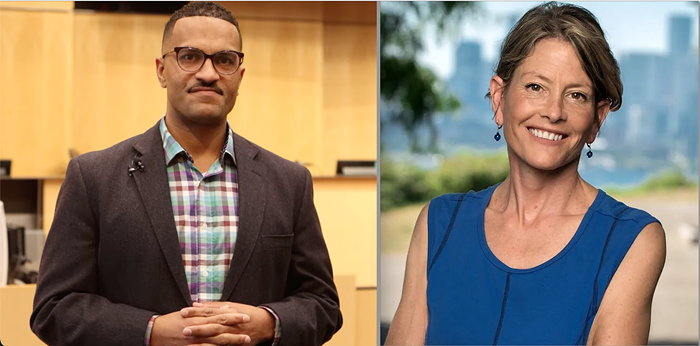Three-term city council member Tom Rasmussen doesn't consider himself a NIMBY. NIMBYs are wealthy, crotchety homeowners opposed to change in their neighborhoods, whose rallying cry is "Not in my backyard!"
But among elected city leaders, Rasmussen has long been most closely associated with them, and not without reason. In 2013, amidst a growing NIMBY outcry over microhousing ("I don't think most people want to live next to a boarding house with itinerant people living in it," one man complained to The Stranger), Rasmussen floated an idea to place a blanket moratorium on the development of these small apartments—even though they're one of the few burgeoning sources of affordable housing units in Seattle. Meanwhile, he lives in a million-dollar home in West Seattle, according to King County property records.
Fast-forward to today: Rasmussen is serving out the remaining five months of his term, having pledged not to run for reelection this November. "I decided if Bertha's not running, I'm not running," he joked on April 1, making reference to the stalled downtown tunnel project—one that he strongly supported as longtime chair of the council's transportation committee.
But as Seattle grapples with explosive growth and a housing-affordability crisis, Rasmussen has come up with an answer—his last stand on housing, as several people described it—and it's one that, wouldn't you know it, enshrines NIMBYism and doesn't tackle the affordability issues head-on.
Enter Neighborhood Conservation Districts (NCDs): a proposal to create a citywide "conservation board" that would, through a process that remains unclear, create officially designated areas in which subcommittees—made up of residents of that area—would set design and building requirements. The primary function of the board and its subcommittees would be to "preserve neighborhood character."
"All neighborhoods are concerned about the pace of change," said Rasmussen council staffer Evan Clifthorne. "Not everyone feels like their voice is being heard."
If the "conservation districts" solution sounds like NIMBYism in a nutshell, well, hold on one second before you grab your pitchfork. You know that soulless, glass-steel corporate section of South Lake Union, the Amazon-saturated area that's hated on week in and week out by many now in (or recently priced out of) the renter class on Capitol Hill?
Theoretically, NCDs might give your average Joe or Jane more of a say over how the face of a neighborhood changes when big companies or new residents move in. "The idea would be that conservation districts would be used to inform what new development would look like," Clifthorne explained. "It has a lot to do with aesthetics, but it's everything from the building materials to landscaping to the windows... some constellation of options that is tailored to make a neighborhood aesthetically cohesive." If lower-income residents of South Lake Union had been able to get involved in that neighborhood's development plans, perhaps there would also have been more of a push toward affordable housing in an area that's now ground zero for the city's shifting housing economics.
I asked Clifthorne who supports this "conservation district" idea, and he pointed me to architect Davidya Kasperzyk, who lives in Ballard. Kasperzyk called NCDs a "1 percent solution that provides both density and cultural heritage." He means "1 percent" in a different sense than critics of income inequality use the phrase, by the way. In his usage, it's referring to the idea that the "conservation district" process should be used for just 1 percent of buildings (those that fall short of historical-landmark status but still need to be preserved in some way). "Great cities don't obliterate their history," he told me. "This is a legacy project for Rasmussen. It's now or never. I don't know if there's anyone else who's ready to step forward and champion this."
Rasmussen insists NCDs won't block density (i.e., the ability for the city to rapidly expand housing supply through the construction of many units close together), but the fear is that, in practice, they'll be applied much more broadly than to just the 1 percent of buildings that Kasperzyk has in mind. Among city and housing leaders, I couldn't find anyone willing to take Rasmussen at his word that overall efforts at increased Seattle housing density wouldn't take a hit.
There's no draft of the legislation yet, but Rasmussen does have an 18-page, city-commissioned report promoting NCDs on his website. Council Members Mike O'Brien, Sally Bagshaw, and Bruce Harrell said they are opposed to the proposal. Council President Tim Burgess said he'd be "very concerned" if it interfered with his urban growth plans. The mayor's office expressed the same concern, and the rest of the council members didn't respond to questions about NCDs by press time.
The mayor's 28-member Housing Affordability and Livability Agenda committee (HALA), which is made up of developers, some tenants, and affordability activists, voted unanimously against Rasmussen's idea, according to HALA cochair Faith Pettis. "From what we're seeing on Council Member Rasmussen's website," she said, "it feels like it could be at odds with what HALA is trying to do. It would reduce the tools that HALA is considering right now—the ability to pursue or implement them." The committee is due to issue a broad set of recommendations on housing, intended to meet a goal of building 20,000 affordable housing units in Seattle over the next decade, by the end of May.
And Roger Valdez, the Director of Smart Growth Seattle, a developer lobbyist who fought off the proposal to temporarily ban microhousing in 2013, called NCDs "a recipe for gridlock, micromanagement, and fussiness over new housing and even remodeling that would turn Seattle into the world's biggest homeowners' association."
Rasmussen had planned to move NCDs through the city council's housing committee by July. But for now, his office won't say when it plans to introduce his legacy project—a parting gift to the people of Seattle, or at least its NIMBYs—as actual legislation. ![]()


















